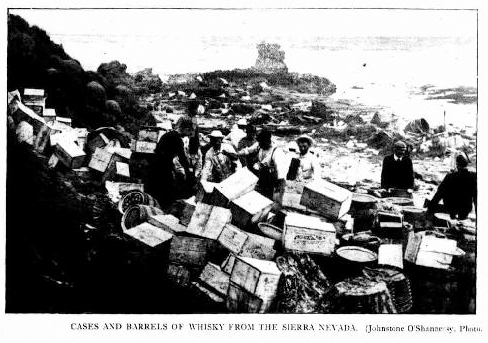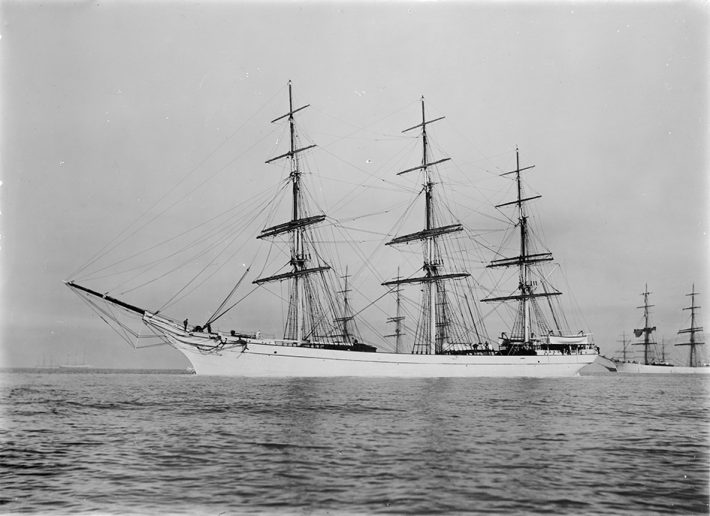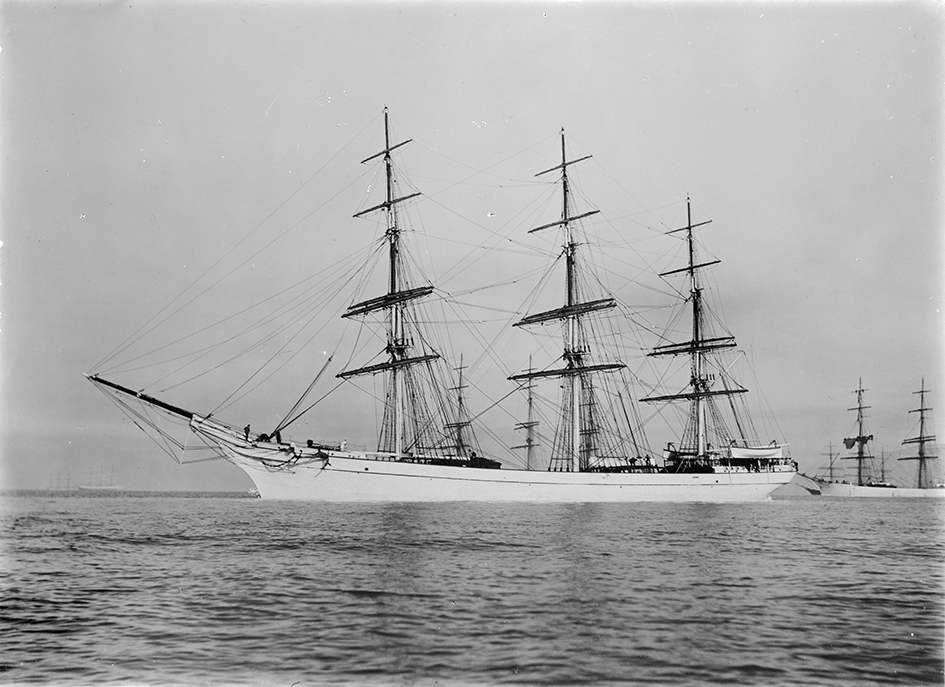By Cameron McCullough
The entrance to Port Phillip is considered to hold some of the most treacherous waters in the world. The Rip, as it is known, has a large tidal flow through a relatively narrow channel from the bay to Bass Strait, and a high rocky seabed. The waters surrounding The Rip are synonymous with wild water and treacherous rocky outcrops that have claimed many ships since the 1830s when Melbourne was settled by Europeans.
One such ship, the Sierra Nevada, was an iron ship of 1523 gross tons. Built at Southampton in 1877, it was 71 metres in length. It had left Liverpool for Melbourne on 17 January 1900 and had been at sea for nearly four months as it approached the end of her voyage, Port Phillip.
On 8 May 1900, the Sierra Nevada sighted Cape Otway, and signalled “All well”. Favoured by fair winds, she made a rapid run along the coast.
As night fell the lights at Cape Schanck and Queenscliff glowed brightly and grew bigger. The crew worked cheerfully. They were within reasonable distance of rest. “Next morning,” they said, “we shall be inside.”
As the night drew on, dark clouds gathered. The wind was blowing from the southwest. It had increased to hurricane force. Suddenly the lookout cried “Breakers ahead”. Then, suddenly, the perilous position of the ship was apparent.
“All hands were called on deck,” said seaman George McGuffie. “The wind was blowing a gale, and the sea was tremendous.”
Huge, angry waves rushed onto the nearby coast. The threatening rocks grew blacker and the crew more fearful.
Rain driven by the wind cut like whipcord, and spray deluged the vessel.
“Let go the topsails,” roared the captain.
The crew, holding hard for their lives, did so. The wind seized the canvas and bellied it out. It stood out in bold relief against the dark background. Then it sagged momentarily, and the report was like a roar of artillery.
Then Captain Scott decided to attempt to “‘bout ship”. This was accomplished, and the gallant vessel, as though scenting escape, dashed her nose into the mountainous and angry waves.
“More breakers ahead,” yelled the lookout. In desperation the captain tried to put about, but the roaring waters gave back the sound of breakers everywhere.
There was nothing for it but to try the anchors.
This the captain did.
“I heard the rattle of the anchor tackle, and I knew that the end was close,” said McGuffie, “as nothing could hold in such a spot.”
They didn’t hold, and before the vessel even attempted to come around, a huge wave swept her from stem to stern.
At three o’clock on 9 May 1900, in inky darkness and a roaring gale, Sierra Nevada was driven onto London Bridge Rock.
“I shall never forget that crash as long as I live,” McGuffie said.
“I rushed aft, and found the water was level with the deck.
“I scrambled forward again, and heard the chief officer call out for someone to bring the sick man McCoy on deck. He had been ill for two months, and was unable to help himself.
“Someone brought him up, and then we made for the lifeboat.”
Only a few kilometres away lay the sleeping towns of Sorrento and Portsea, oblivious to the grim fight with death being made by the crew.
Only 11 sailors made their way to the lifeboat. The ropes were jammed, but they cut them away. Then the boat, suddenly released, dropped into the sea. A big wave swept over the lifeboat.
“In a moment the sailmaker and steward were washed out. Another wave washed all the others out, except McCoy, Freeman, Delahunt and myself,” McGuffie said.
The remaining seamen were hurled toward the shore at a terrific pace. They were among the breakers almost at once.
A wave shot them on the rocks, and with terrible desperation McGuffie clung to a jutting point, which cut and lacerated him.
Soon after he was joined by Delahunt and Freeman, and a little later McCoy crawled up, terribly bruised. He had been too ill for some time to carry out his duties, but the sea had given him up while savagely devouring his stronger comrades.
The only other survivor was a boy named Griffith, one of the apprentices, who swam ashore in a boiling, raging sea. It eventually tossed him, tired and almost unconscious, onto the beach.
The darkness was impenetrable. Huddled together with the sound of the waves in their ears, and the angry roar of the surf, the men waited for the dawn.
They drank whisky to revive themselves, and finally sleep came.
When dawn broke Freeman clambered over the rocks, and climbed the sand hills. From there he saw a rocky headland towering up before him. To the right was the circular arched rook of London Bridge Rock, in the centre of which lay the stern and bow of the vessel.
From right to left of this was a curving sandy beach, strewn with spars, iron tanks, whisky casks, and wreckage of all descriptions. Below but out of sight his mess mates lay huddled together still asleep.
The first knowledge of the disaster was Freeman’s arrival at the small telegraph office at Portsea, close by the quarantine station. The seaman – torn, battered, and dishevelled – told of the wreck.
A search party was immediately formed. Constables Norwood and McDonald of Sorrento, and Senior Constable Spillane from the quarantine station hurried to the spot, with a view of rendering whatever aid they could in saving lives, and the recovery of the bodies, and also to prevent, as far as possible, pilfering of the cargo.
 Rescuers noted the vessel had been crushed and smashed like an eggshell, and the next morning saw angry waves roaring and clutching greedily at a small piece of the ship.
Rescuers noted the vessel had been crushed and smashed like an eggshell, and the next morning saw angry waves roaring and clutching greedily at a small piece of the ship.
“For miles along the beach, wreckage has been thrown up, and it all tends to show the awful suddenness and completeness of the disaster, which is the second shipwreck on the Victorian coast within a very short time,” wrote a reporter from The Argus.
Twenty-three were dead. The body of Captain Scott, the master of the vessel, was discovered after it washed ashore.
The five survivors were injured to differing degrees by the jagged rocks on to which the sea flung them. A reporter noted their condition at the nearby Point Nepean artillery barracks.
“George McGuffie comfortably smokes his pipe. Close by John Delahunt lies still, somewhat dazed and uncertain; and in yet another bed is John Freeman.”
All the survivors praised Captain Scott and his officers, and their coolness throughout the awful incident.
A newspaper of the day reported: “There is enough whisky about to make glad the hearts of Sorrento and Queenscliff for months to come, but the shadow of a great tragedy is over everybody.”
An inquiry into the disaster put the loss of the ship down to “imprudent navigation”. Only 11 bodies were recovered from the wreck and they were interned at Sorrento Cemetery.
First Published in Peninsula Essence Magazine





